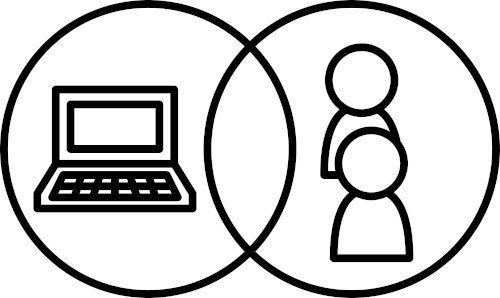A 2019 Gallup study that included 128 schools and more than 110,000 students found that student engagement and hope were significantly positively related to student academic achievement progress in math, reading, and all subjects combined.
This is why it’s even more concerning that we continue to see student performance decline, with the National Assessments of Educational Progress, also known as the Nation’s Report Card, reporting that students in the U.S. had the largest average reading score decline since 1990, and the first ever score decline in math in 2022.
Knowing that many students are struggling with learning setbacks can feel overwhelming, but we’re hoping we can help you look at these scores as an opportunity to implement new instructional strategies that engage students, and therefore, help mitigate learning loss.
Blended Learning Increases Student Engagement
A learning environment we recommend to increase student engagement is blended learning, which combines a mix of face-to-face and online instruction for students. Gen Z is the first truly internet-dependent generation – getting their entertainment, information, and socialization online, oftentimes from social media. Therefore, to reach these students where they are, we need to evolve our instructional strategies.
This doesn’t mean teachers need to utilize Instagram Reels or TikTok, bur rather use technology strategically to engage students in their learning.
Plus, according to Education and Information Technologies, when compared to traditional learning, 73 percent of educators believe blended learning has improved student engagement. As former teachers that have transitioned into a school leadership role, we hope these four blended learning instructional strategies help you maximize student learning and engage them where they are.
Blended Learning Instructional Strategies
Our instructional model at Florida Virtual School includes evidence-based approaches, professional development for teachers, curriculum specifically designed for the online learning environment, and flexibility for students and families to communicate with teachers to individualize learning and provide support.
With this in mind, we recommend starting by enabling your teachers to connect with students and their families one-on-one to truly understand their needs. By starting with what students need, it will be easier to determine which blended learning instructional strategy will work best for your students.
Related:
Tips for blended learning success
Blended learning models can help schools reopen–here’s how
- Are substitutes the answer to the teacher shortage? - June 13, 2023
- Preparing for ransomware attacks begins with education - June 13, 2023
- How to use UDL-inspired technology to reengage students - June 12, 2023

